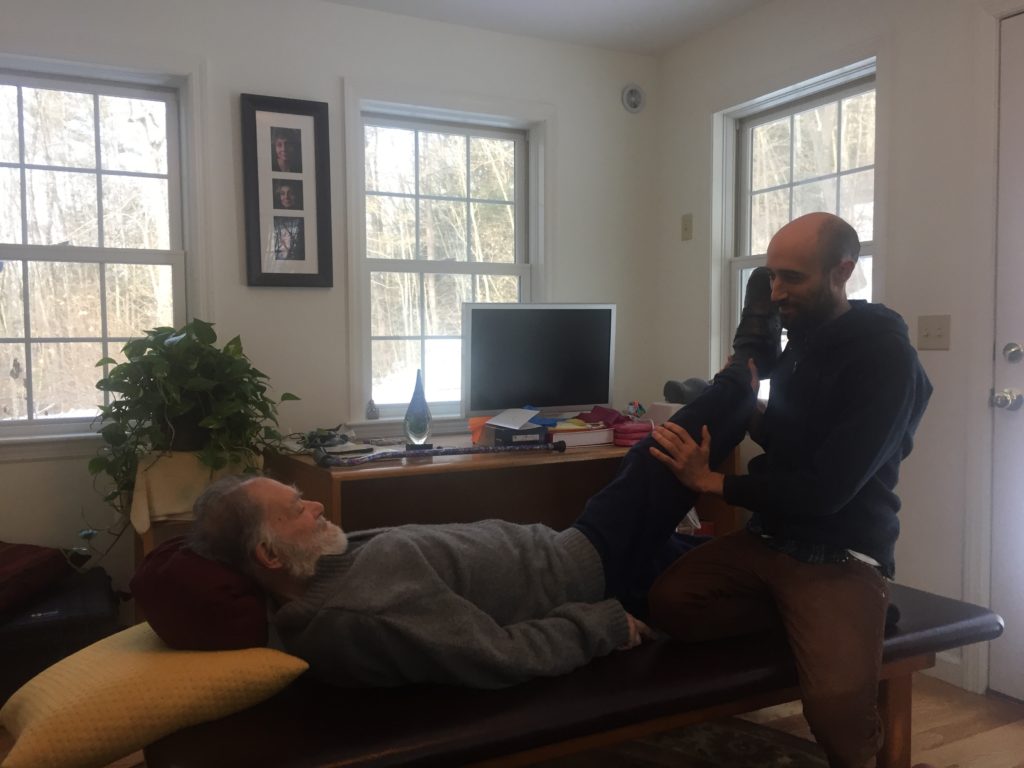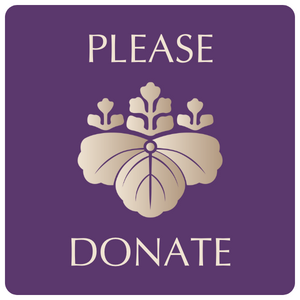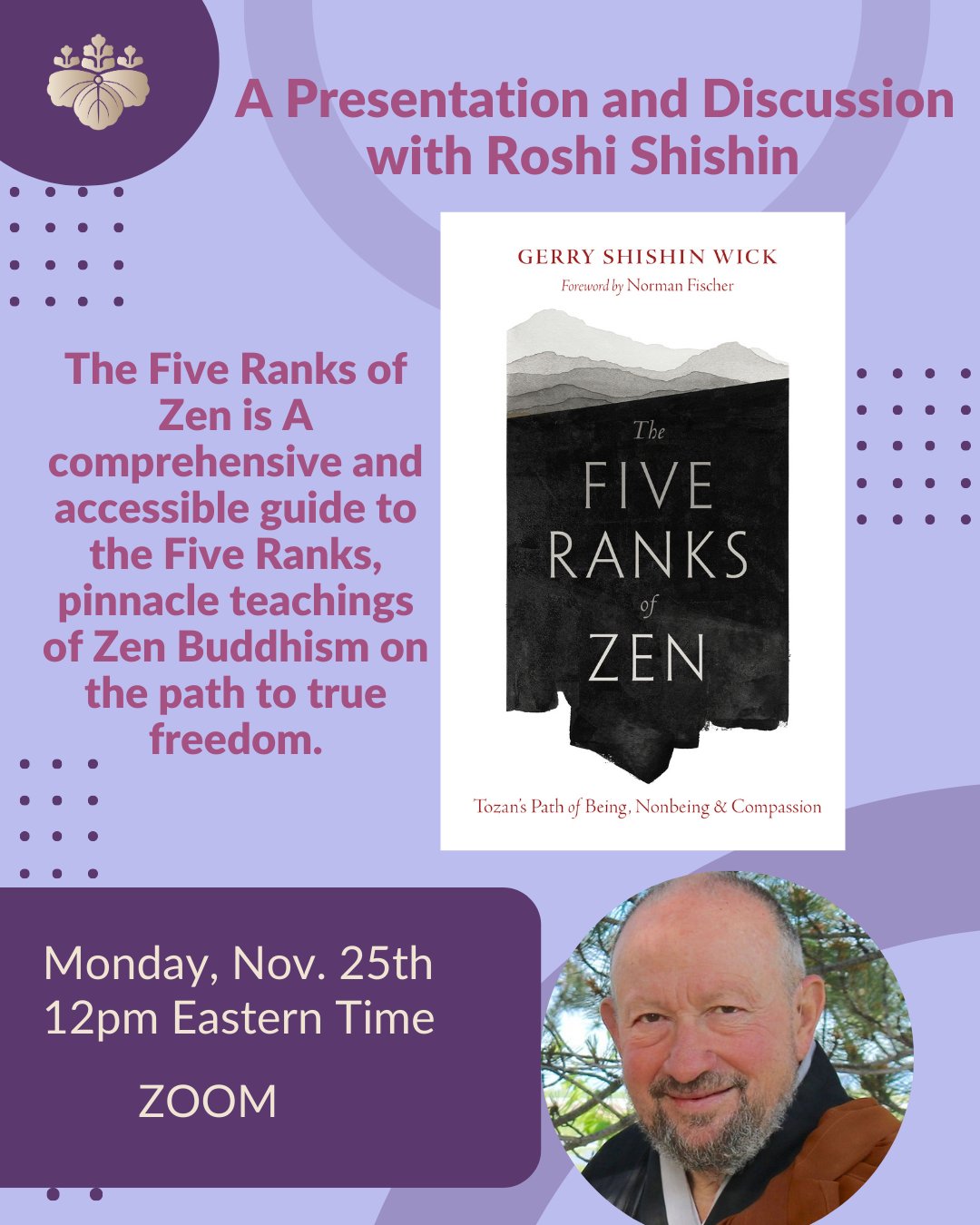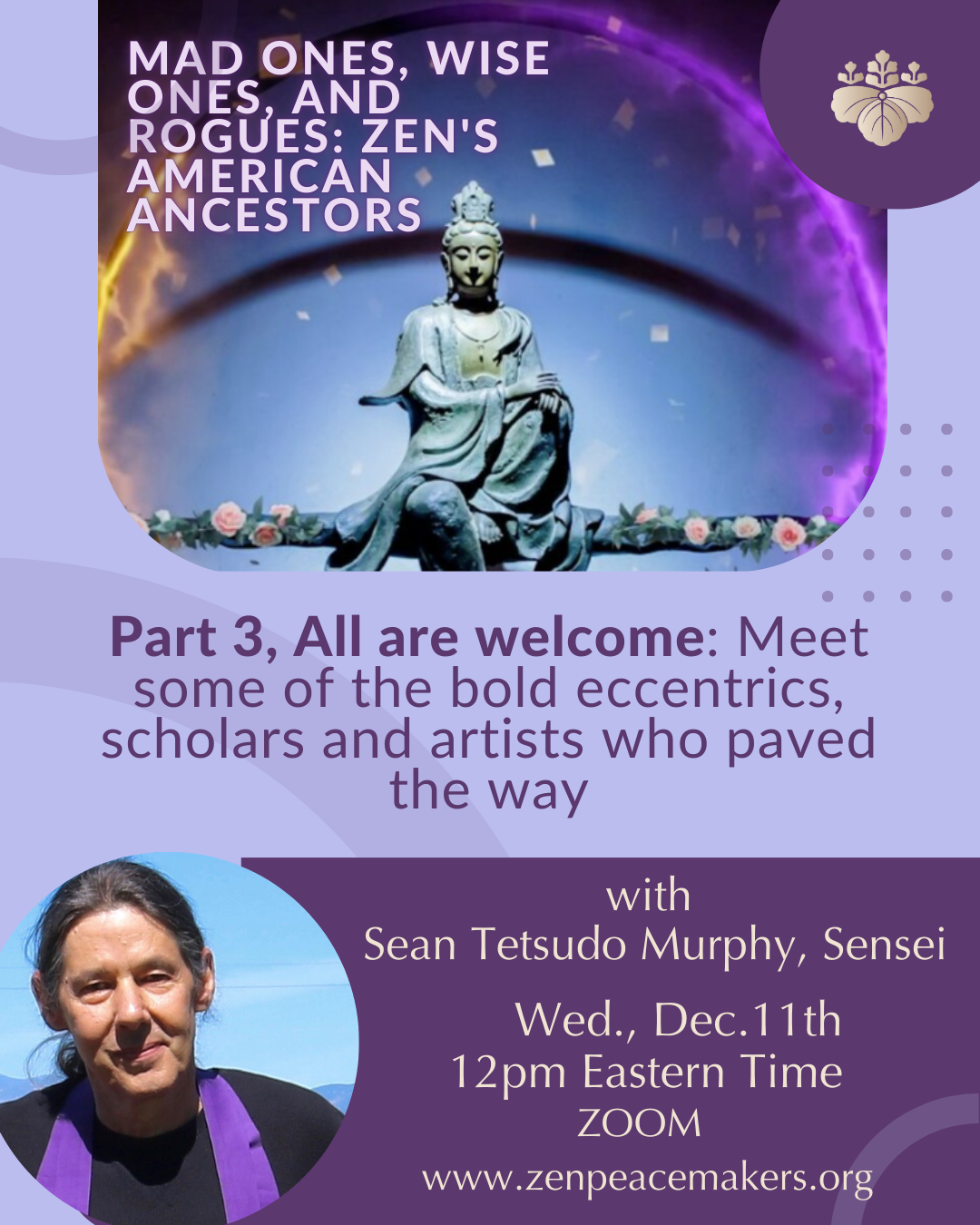By Ariel Setsudo Pliskin
MONTAGUE, MASSACHUSETTS, USA. “Sit comfortably” the therapist told Bernie. He was laying on his back with his head propped up. “I am sitting comfortably,” he explained. “In Judo, they teach you to lay like this so you could see an attacker approaching.” Bernie often jokes since his stroke that he hasn’t done this much physical exercise since he practiced Judo in college. The Japanese style and brief meditation in Judo primed him to pick up Zen meditation, which he eventually did with great passion, to the exclusion of Judo… or any other fitness routine.
Eve discovered Feldenkrais as a result of reading the work of Norman Doidge, in two books on neuro-plasticity recommended by Bernie’s friend Daniel Seigel. Studying the Feldenkrais method (which was inspired in part by Judo) with me as part of his stroke recovery treatment, Bernie has remarked that he is surprised he hadn’t realized earlier the similarities between the somatic arts like Feldenkrais and his own Peacemaker tenets. That same book also recommended the two-week long intensive stay Bernie did at the Taub center in Alabama.
I had a little breakthrough with Bernie last week. One of the exercises assigned by the Taub center is the following. Note that all of the instructions focus exclusively on the impaired right side: Right ankle eversion with theraband: Sit in chair with your feet flat on the floor and touching each other. Turn your right foot out to the side. Make sure that your heel stays in place so that the movement is coming from your ankle and not the hip or knee. As soon as you are strong enough, add theraband around the right and left forefoot. Try yellow first and then progress to orange theraband.
He was certainly strong enough to move his right foot with the theraband. His problem with this exercise wasn’t one of muscle. However, despite the instruction to the opposite, I saw Bernie moving his right knee in addition to his foot. I told Bernie not to move his knee. He held his knee is place with his hands and restrained it while doing the same motion. He was able to move the foot without the knee, but was contracting many muscles of his arms and trunk, in addition to holding his breath, in order to keep the knee still.
I remembered Doidge’s summary of a Feldenkrais principle: “if strain, no gain.” I incorporated a couple other Feldenkrais principles. First, Feldenkrais recommends practicing playful, pleasurable exploration instead of trying to do it “right”. This reminds me of Bernie’s teaching to use the ingredients you have to make the best meal possible instead of thinking of the ingredients you don’t have. I invited Bernie to enjoy aimless meandering motions, always exploring how he could do things more easily. I asked him to move both legs at once in this style, making as wide knee motions as possible to accompany the movement of the foot. Then, I invited him to explore making smaller and smaller motions with the knees while continuing to move the feet as much as possible.
Another Feldenkrais principle is that instead of merely focusing on improving strength and flexibility of the impaired limb, do motions on both sides in order to rewire the brain. One limb can teach the other limb. I invited Bernie to try the left side, on which it is easy for him to differentiate the foot from the knee, and then the right.
Finally, I asked him to move only the right foot as much as possible while moving the right knee as little as possible. He was able to move the right foot while barely moving the right knee to a much greater extent than he did the first time! He was differentiating to a new level!
Doing these exercises and study with Bernie, I am intrigued by the ability of our Three Peacemaker Tenets to describe processes in the body in a way I had not previously considered. I had usually considered “not-knowing: letting go of fixed ideas” to refer to softening the attachments to rigid thoughts and opinions. I had considered “bearing witness to the joy and suffering of the world” as empathizing with other people’s emotions and understanding their perspectives. What if I define not-knowing to also include letting go of movement patterns that don’t work? What if bearing witness to our whole body is required to enjoy the full range of motion of which it is capable?
From what I’ve recently learned studying neuroscience and the somatic arts, strokes kill off neurons in our brain involved in certain sensations and motions (in Bernie’s case, those on right side). Luckily, the brain is plastic and enough brain cells remain to create new pathways to the lost movements. I wonder whether developing the brain maps necessary for introception (sensing within one’s body) and proprioception (sensing the position of one’s body in space) can be considered a type of bearing witness necessary for healthy action. Once again, I saw that Bernie’s favorite metaphor of bearing witness to One Body (see here) applies to the literal body as well.
Ariel Setsudo Pliskin is a Zen Peacemakers Minister and Yoga instructor in Western Massachusetts. You can learn more about his work and read more of his writing at www.dharmainaction.org.





One Response
Wonderful, Ari. Merely wonderful.
Brilliant article.
Thank you, dear friend, and happy Chanukah.